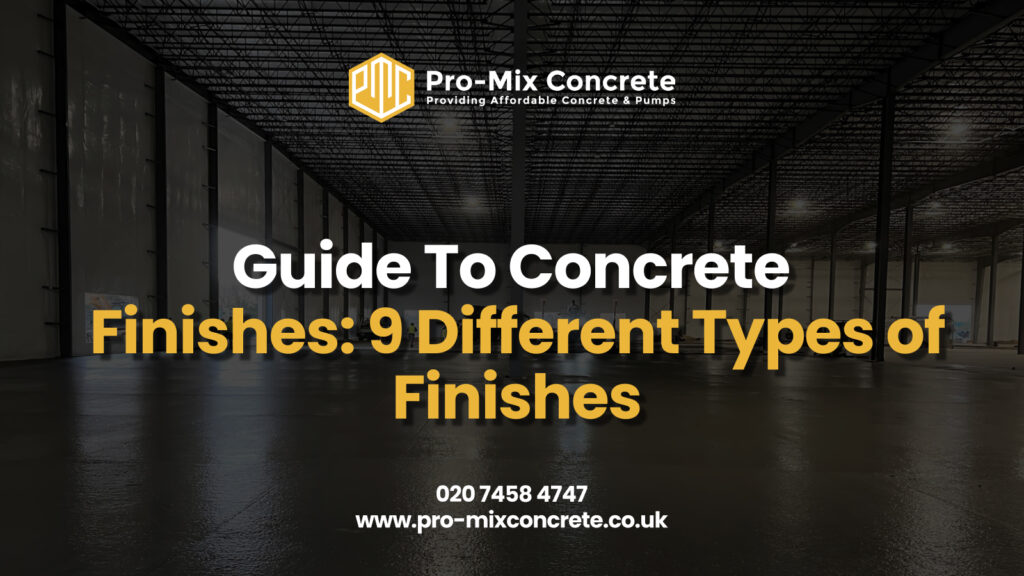Premixed concrete eliminates the guesswork in mixing ratios, making it perfect for small home renovation projects. These bagged solutions contain precisely measured cement, sand, and aggregate; you simply add water for consistent results every time.
Ideal projects include:
- Patios and walkways
- Fence post installations
- Garden features and repair work
- Any project under 2 cubic metres
Essential process: Calculate your project volume, gather basic tools (mixing container, trowel, safety gear), properly prepare the site, add the correct water amounts, pour systematically, and allow 28 days for full curing. The key benefits are consistent quality, reduced waste, no specialised equipment requirements, and reliable strength for residential applications.
Small home renovations shouldn’t require professional concrete mixing expertise or expensive equipment rentals. Advanced experimental investigations reveal that premixed powder was commercially available on the Chinese market, containing all the granular constituents, i.e., cementitious materials, mineral filler, fine aggregates, and water-reducing agent. Premixed concrete bags offer homeowners a practical solution for fixing cracked walkways, building garden features, or installing fence posts.
These ready-to-use products contain precisely measured cement, sand, and aggregate – you simply add water and mix. Premix concrete eliminates the complexity of sourcing separate materials while ensuring consistent results every time. If you’re tackling your first DIY concrete project or improving existing structures, understanding proper techniques makes the difference between professional-looking results and costly mistakes.
We supply premium bagged concrete solutions with detailed mixing instructions. Our technical support team helps homeowners choose the right product for their specific renovation needs.
Get Expert Assistance: 0800 772 3808
Understanding Premixed Concrete
Premixed concrete is a factory-blended combination of cement, sand, gravel, and additives that requires only water addition to create workable concrete.
What is Premixed Concrete?
Premixed concrete differs significantly from cement. Cement acts as the binding agent, while concrete combines cement with sand and gravel for structural strength. Factory mixing ensures optimal ratios that would be difficult to achieve manually.
Standard bagged concrete typically contains:
- Portland cement (10-15%)
- Sand (25-30%)
- Gravel or crushed stone (60-65%)
- Chemical additives for workability
How Does Premixed Concrete Differ from Cement?
Cement powder mixed with water creates a paste that hardens but lacks structural strength. Concrete incorporates aggregates (sand and gravel) that provide bulk, reduce shrinkage, and create the strong matrix needed for construction applications.
Types of Premixed Concrete
- Standard Mix: General-purpose concrete suitable for most residential applications, including walkways, patios, and fence posts. Compressive strength reaches 20-25 MPa after full curing.
- High-Strength Mix: Enhanced formulations for heavy-duty applications like driveways or structural repairs. Achieves 30-35 MPa compressive strength with specialised additives.
- Decorative Mix: Contains colour additives or special aggregates for aesthetic applications. Available in various colours and textures for creative projects.
When to Use Premixed Concrete for Renovations
Premix concrete works best for projects requiring 2 cubic metres or less, where consistent quality matters more than absolute cost savings.
Suitable Project Types
Small-scale residential projects benefit most from bagged concrete:
- Walkways and Paths: Widths up to 1.5 metres, depths of 75-100mm work well with standard bags. Each 25kg bag covers approximately 0.012 cubic metres.
- Patio Slabs: Areas under 20 square metres remain manageable for DIY mixing and pouring. Larger areas require careful timing to avoid cold joints.
- Fence Posts: Individual post holes use 1-3 bags per post, depending on size and depth requirements.
- Garden Features: Planters, steps, and decorative elements benefit from controlled mixing that ensures a consistent appearance.
Projects Not Ideal for Premixed Bags
Large continuous pours exceed practical mixing capabilities. Projects requiring more than 50 bags become labour-intensive and time-sensitive.
- Driveways: Multiple vehicle widths require professional equipment for proper consolidation and finishing.
- Foundation Work: Structural applications need engineered mixes and professional quality control.
Planning Your Project
Proper planning prevents material shortages and ensures project success within available working time.
Calculating How Much Concrete You Need
Volume calculation follows a simple formula:
Length × Width × Depth = Volume in cubic metres.
Example Calculation:
- Walkway: 10m long × 1m wide × 0.1m deep = 1 cubic metre
- Standard 25kg bags yield approximately 0.012 cubic metres
- Required bags: 1 ÷ 0.012 = 83.33, rounded up to 84 bags
Note: Add 10% extra for waste and variations in subgrade preparation. Online calculators simplify this process for complex shapes.
Calculate your project requirements with Pro-Mix Concrete’s online volume calculator. Input your dimensions and receive accurate material quantities plus delivery options for larger orders.
Planning for Overage and Waste
Order extra bags rather than running short during active work. Unopened bags store easily for future projects. Partially mixed concrete cannot be saved once water is added.
Budgeting and Cost Considerations
Standard premixed concrete bags cost £4-6 per 25kg bag. High-strength and decorative mixes range from £6 to £10 per bag.
Total Project Costs Include:
- Concrete bags (primary expense)
- Reinforcement materials (£15-25 per project)
- Basic tools (£30-50 if not owned)
- Rental equipment for larger projects (£25-40 per day)
Tools and Materials Needed
Basic concrete work requires minimal specialised equipment that most homeowners can affordably acquire.
Essential Safety Gear:
- Safety glasses and dust masks
- Waterproof gloves
- Steel-toed boots
- Long sleeves for skin protection
Mixing Equipment:
- Large wheelbarrow or mixing tub
- Garden hoe or concrete rake
- Measuring container for water
- Portable mixer for projects over 10 bags
Placement Tools:
- Screed board for leveling
- Float for surface smoothing
- Edging tools for clean borders
- Plastic sheeting for curing
Step-by-Step Guide to Using Premixed Concrete
Following systematic procedures ensures professional results with minimal experience.
Preparing the Site
Site preparation determines long-term concrete performance more than mixing technique.
Excavation Requirements:
- Remove topsoil and organic matter completely
- Excavate 25mm deeper than the final concrete thickness
- Create a stable, well-draining base material
- Compact subgrade to prevent settling
Formwork Installation:
- Use straight lumber for clean edges
- Secure forms with stakes every 1.2 metres
- Check the level and alignment before mixing
- Oil forms lightly for easy removal
Mixing the Concrete
Proper water ratios create workable concrete without compromising strength.
Correct Mixing Process:
- Empty the contents into a mixing container
- Create a crater in the centre of dry materials
- Add 75% of the recommended water initially
- Mix thoroughly from outside edges inward
- Add remaining water gradually until proper consistency
Target consistency resembles thick oatmeal that holds its shape when squeezed but flows when worked.
Pouring and Placing
Premix concrete requires immediate placement after achieving proper consistency.
Pour concrete in sections starting from one end. Work systematically to avoid cold joints between batches. Use a screed board to level the surface, maintaining a consistent thickness throughout.
Consolidation Techniques:
- Tap forms gently to release air bubbles
- Work concrete into corners and edges
- Avoid overworking, which brings excess water to the surface
Finishing the Surface
Surface finishing determines both the appearance and the durability of completed work.
Basic Finishing Steps:
- Initial Leveling: Screed excess concrete using a straight edge
- Floating: Smooth surface with a wooden or plastic float
- Edging: Create clean borders with the edging tool
- Final Smoothing: Steel trowel for smooth finish (optional)
Wait until surface water disappears before final finishing. Premature finishing weakens surface layers.
Curing the Concrete
Proper curing develops full concrete strength over 28 days. Since concrete is subjected to stress development, the tensile strength of the substrate is usually higher, or at least of the same magnitude as, the overlay concrete strength, emphasising the importance of proper curing for achieving design strength.
Curing Requirements:
- Keep the surface continuously moist for the first week
- Cover with plastic sheeting or wet burlap
- Maintain the temperature above 10°C during the initial set
- Avoid heavy loads for a minimum of 7 days
Set and Cure Timeline:
- Initial set: 4-6 hours (temperature dependent)
- Walking safely: 24-48 hours
- Light loads: 7 days
- Full strength: 28 days
Tips and Troubleshooting
Common mistakes compromise concrete quality but remain easily preventable with proper knowledge.
Common Mistakes and How to Avoid Them
- Water Ratio Errors: Too much water weakens concrete, while insufficient water prevents proper mixing. Follow manufacturer recommendations precisely.
- Over-mixing: Excessive mixing separates aggregates and reduces strength. Mix only until uniform consistency appears.
- Weather Considerations: Avoid pouring during rain or freezing conditions. Hot weather requires faster work and additional curing moisture.
When to Call a Professional
Large projects, structural work, or challenging site conditions exceed typical homeowner capabilities. Professional contractors possess specialised equipment and experience for complex installations.
Professional Help Indicators:
- Projects exceeding 2 cubic metres
- Structural or load-bearing applications
- Steep slopes or difficult access
- Decorative finishes requiring specialised techniques
Bottom Line
Premixed concrete empowers homeowners to complete professional-quality renovations without specialised mixing knowledge or expensive equipment. The controlled factory blending ensures consistent results, while simplified mixing procedures make projects accessible to DIY enthusiasts. Proper planning, systematic execution, and adequate curing time produce durable improvements that enhance property value and functionality.
Small renovation projects become manageable when you understand material requirements, follow proven techniques, and respect concrete’s working limitations. Success depends more on careful preparation and patience during curing than on advanced technical skills.
Start Your Next DIY Project With Pro-Mix Concrete Solutions
Pro-Mix Concrete makes home renovation dreams achievable through premium bagged concrete products designed specifically for homeowner success. Our comprehensive range includes standard, high-strength, and decorative mixes formulated for British climate conditions and local building requirements.
Contact us today for expert product recommendations and comprehensive project support. Our team provides detailed technical guidance to ensure your renovation success from start to finish.
Talk To Experts: 0800 772 3808
Frequently Asked Questions
Is premixed concrete suitable for small DIY projects?
Yes, premixed concrete is ideal for many small home projects like patios, walkways, fence posts, and repairs, as it saves time and ensures consistent results.
How much premixed concrete do I need for a small renovation?
Calculate the volume by multiplying length × width × depth for your project area, then check the coverage listed on the concrete bag to determine the required bags.
How long does premixed concrete take to set and cure?
Premixed concrete typically sets within 24 to 48 hours and reaches full strength after 28 days; you can walk on it after 24-48 hours.
Can I add color or modifiers to premixed concrete?
Yes, you can add pigments or additives to the mix before pouring to achieve decorative colors or enhance specific performance properties.
Do I need any special tools to use premixed concrete?
For most small jobs, you need a mixing container, shovel, trowel, and safety gear; a wheelbarrow or mixer makes mixing easier for larger projects.
What if I have leftover premixed concrete? How should I dispose of it?
Leftover concrete should be allowed to harden completely, then disposed of according to local regulations or taken to approved recycling facilities.
- Dennis Broderick
- Dennis Broderick is the founder and owner of Pro-Mix Concrete Company, a trusted name in ready-mix concrete solutions across the UK. With over 20 years of hands-on experience in the construction and concrete industry, Dennis brings unmatched expertise, practical insights, and a commitment to quality on every project - from residential driveways to large-scale commercial developments.
 BlogDecember 25, 2025The Causes of Wet Concrete and How to Deal With It
BlogDecember 25, 2025The Causes of Wet Concrete and How to Deal With It BlogDecember 24, 2025Transforming Your Garden with Concrete: Ideas, Design Tips, and Inspiration
BlogDecember 24, 2025Transforming Your Garden with Concrete: Ideas, Design Tips, and Inspiration BlogDecember 22, 2025Guide To Concrete Finishes: 9 Different Types of Finishes
BlogDecember 22, 2025Guide To Concrete Finishes: 9 Different Types of Finishes BlogDecember 15, 2025Tips to Hire Concrete Pumps in London
BlogDecember 15, 2025Tips to Hire Concrete Pumps in London





